If there is a take-home message that ecologists and conservationists need to shout louder and louder, it is this: Re-wild parts of your yard!
Interior-forest specialist birds are reported to primarily require large, undisturbed forest areas in which to breed (Archer et al. 2019). Why do these species need interior forest conditions? Conservationists and research suggest that these species are vulnerable to the increased predators that are found in fragmented areas. Also, the abundance of food (e.g., insects) is often reduced when fragmentation limits the amount of vegetation and there may not be enough resources to raise chicks. Conventional thinking is that they avoid urban areas because these areas contain fragmented forests.
Over the years, my students and I have been conducting research to determine those forest birds that do and do not breed in urban areas. For example, in a review paper by Archer et al. (2019), we classified 16 species of birds as interior-forest specialists. Three species, Norther Parulas (Setophaga americana), Pileated Woodpeckers (Dryocopus pileatus), and Summer Tanagers (Piranga rubra), were all categorized as interior-forest specialists (Figure 1). However, one thing we noticed right off is all of the studies that helped defined these three birds as interior-forest species were primarily conducted in the Northeast of the United States.
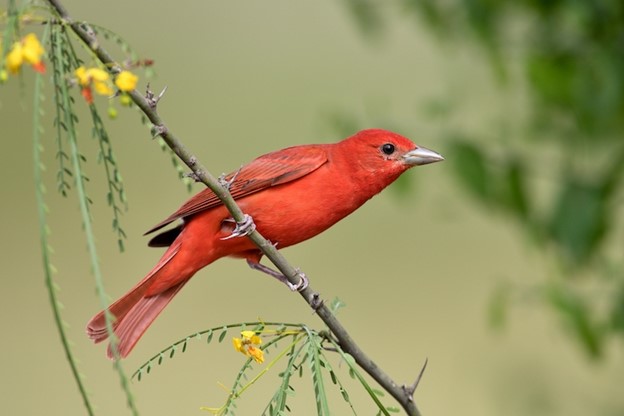
Credit: Andrej Chudy https://creativecommons.org/licenses/by-nc-sa/2.0/
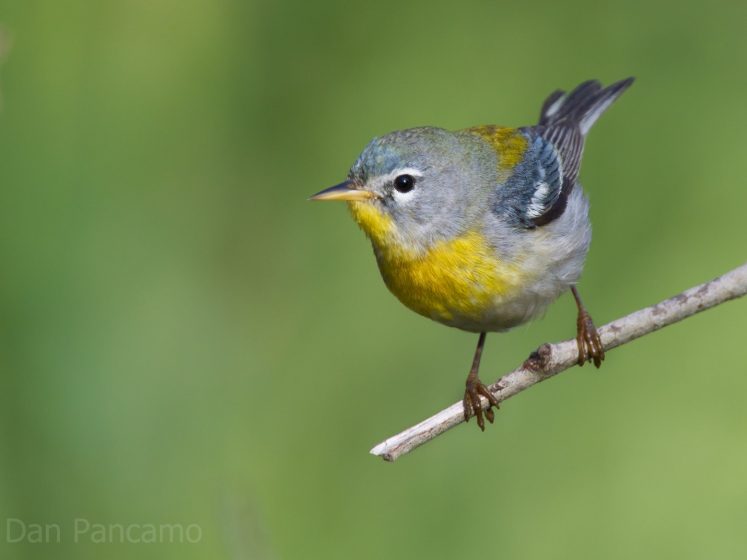
Credit: Dan Pancamo https://creativecommons.org/licenses/by-nc-sa/2.0/
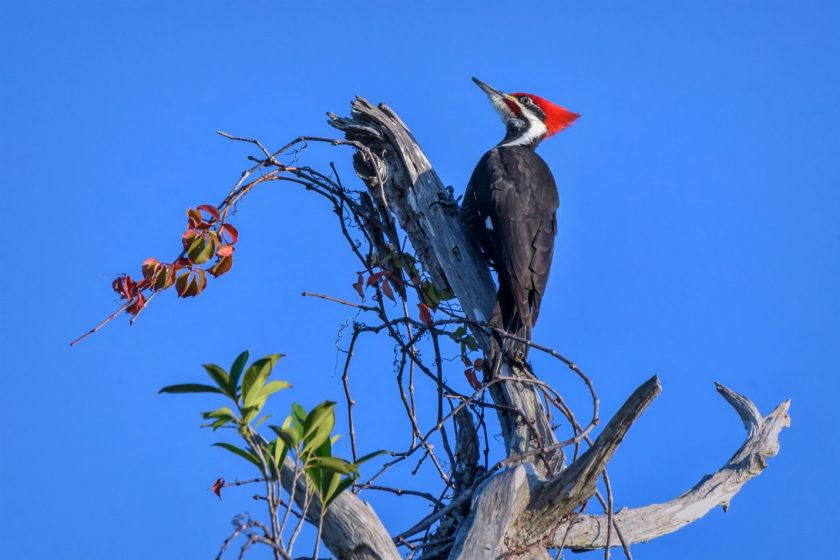
Credit: Diana Robinson https://creativecommons.org/licenses/by-nc-sa/2.0/
Living in Gainesville, Florida, I and others noticed that Northern Parulas, Pileated Woodpeckers, and Summer Tanagers were calling throughout the breeding summer in multiple neighborhoods in Gainesville. Granted, these neighborhoods are typically older and contain large trees, but this evidence was anecdotal. Perhaps these three species do breed in urban neighborhoods. Pileated woodpeckers are a non-migratory species that nest and roost in cavities that they excavate in large, dead trees. Summer Tanagers and Northern Parulas are Neotropical migrant songbirds that breed in the United States and migrate to Central or South America for the winter. To explore this question, graduate student Natalie Pegg and I measured whether older neighborhoods in Gainesville, FL, contain enough vegetation to allow these birds to breed. Our overall thought was that perhaps something is different for birds breeding in the Southeast versus the Northeast United States.
We selected two older residential neighborhoods in Gainesville, FL. These neighborhoods are characterized by significant tree canopy cover (about 43% tree canopy cover on average), small forest patches occupying about 15% of the total neighborhood area, and each yard was a bit different from another yard in terms of the amount of lawn, trees, and vertical heigh structure (Figure 2). We set up bird survey transects and asked: 1) Do these species consistently occur in residential areas throughout the breeding season, and 2) are there vegetative features that seemed to attract each of these species?
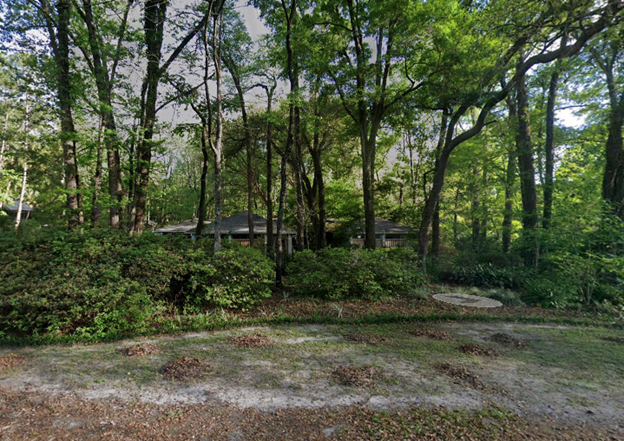
Credit: Natalie Pegg
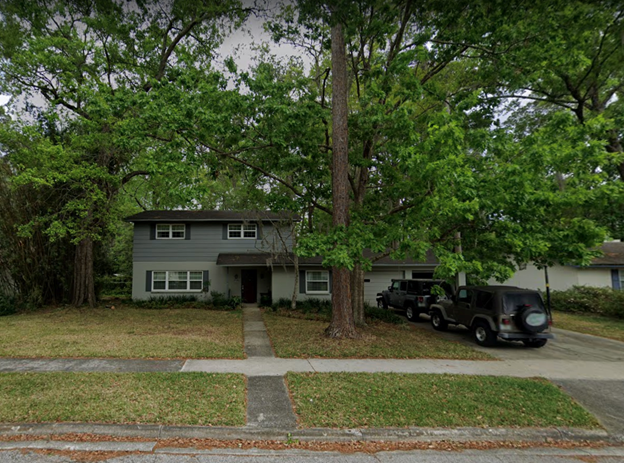
Credit: Natalie Pegg
Aside from striking up interesting conversations with local residents — imagine walking through neighborhoods early in the morning, peering in peoples’ yards with binoculars — we detected quite a few breeding individuals throughout the summer. Northern Parulas were the most numerous (660 detections), followed by Pileated Woodpeckers (77 detections), and Summer Tanagers (51 detections). These three species were seen consistently throughout the breeding season (May–August). We concluded that these species were indeed breeding in these neighborhoods. Now, some may argue that we did not determine whether they had successfully raised offspring, which we did determine. It is possible that the breeding success is less than in areas of contiguous forest. However, we did see small family groups of at the end of the season flying about. Also, because they were consistently found throughout the season (and anecdotally, they do come back year after year), we were confident that they were breeding with some success.
Now, which parts of the neighborhoods are they found most often? How do the designs of yards and neighborhoods provide suitable breeding/foraging habitats? We determined that all three species were primarily found when vertical height structure was most prevalent within 5 meters of where a bird was spotted. What is vertical height structure? When you look from the ground to the top of the trees, the vegetation in-between is called vertical height structure. All three species occurred most often in areas with lots of vertical height structures. Additionally, Pileated woodpeckers and Summer Tanagers were found most often when small forest patches were nearby. Pileated woodpeckers were also more common in areas with more tree snags. Snags are dead or dying trees that are foraging for nesting habitats for woodpeckers. Northern Parulas were more common in areas with more oaks and also in areas with Spanish moss hanging on the trees. Overall, it seems like all three species gravitated towards areas where there were essentially lots of trees and increased vertical height structures. For more details on the study, see https://edis.ifas.ufl.edu/publication/UW500.
Interestingly, Northern Parulas are known to nest in tree epiphytes such as Spanish moss (Tillandsia usneoides). In Gainesville, Spanish moss is everywhere and readily available as a nesting substrate, In the northeast, it does not occur, but beard moss (Usnea longissima) does (Moldenhauer and Regelski 2020). However, beard moss is a sensitive species that tends to be found primarily in undisturbed, old-growth forests (Wetmore 2002). Thus, a partial reason for Northern Parulas not breeding in northeast urban areas may be because of the lack of beard moss in these urban landscapes!
In conclusion, we do believe that with enough vegetation in a yard and neighborhood, these species will breed in or near your yard in cities located in the southeastern United States. Probably the limiting factor is the vertical height structure. Re-wild certain areas of your yard! You can do this by planting areas of trees and bushes and simply not mowing this area (eventually, succession takes over and you get lots of vertical height structure). I (Mark Hostetler) have always been curious about and advocating that urban habitats do matter! I have blogged about the importance of stopover habitat in urban areas for migrants and the creation of residential areas that conserve biodiversity. If there is a take-home message that ecologists and conservationists need to shout louder and louder, it is this: small bits matter!
Mark Hostetler and Natalie Pegg
Gainesville
about the writer
Natalie Pegg
Natalie is currently a graduate research assistant at Kansas State University studying the demography of mourning doves in Kansas. She received her master’s degree from the University of Florida in the spring of 2022. There, she studied the use of residential neighborhoods during the breeding season by three avian species generally classified as interior forest specialists. Her research interests include urban ecology, resource selection, and habitat conservation.
References
Archer, J. M. J., M. E. Hostetler, G. Acomb, and R. Blair. 2019. A Systematic Review of Forest Bird Occurrence in North American Forest Fragments and the Built Environment. Landscape and Urban Planning 185:1–23. https://doi.org/10.1016/j.landurbplan.2019.01.005
Moldenhauer, R. R. and Regelski, D. J. (2020). Northern Parula (Setophaga americana), version 1.0. In Birds of the World (A. F. Poole, Editor). Cornell Lab of Ornithology, Ithaca, NY, USA. https://doi.org/10.2173/bow.norpar.01
Wetmore, C. (2002). Conservation assessment for Usnea longissima Ach. In the Upper Great Lakes national forests. United States Forest Service, Eastern Region, Milwaukee, Wisconsin.


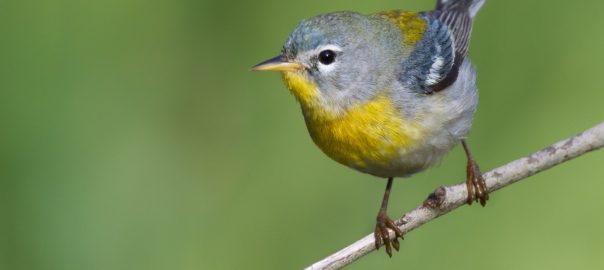
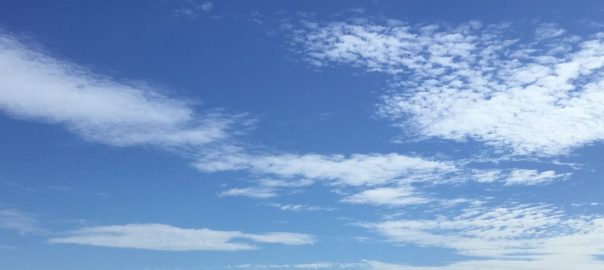
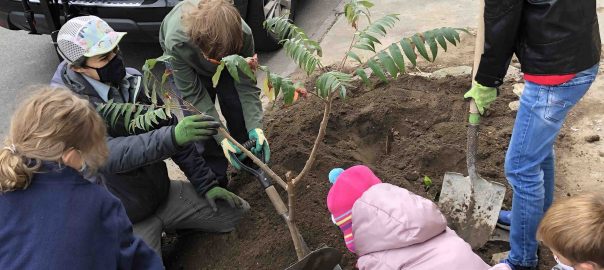
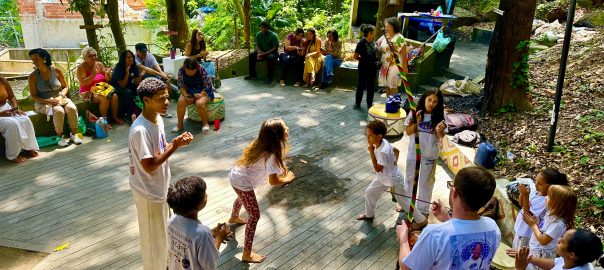
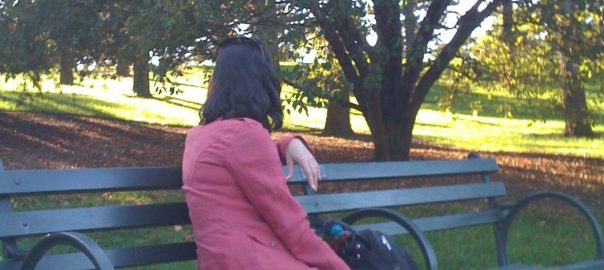
Leave a Reply